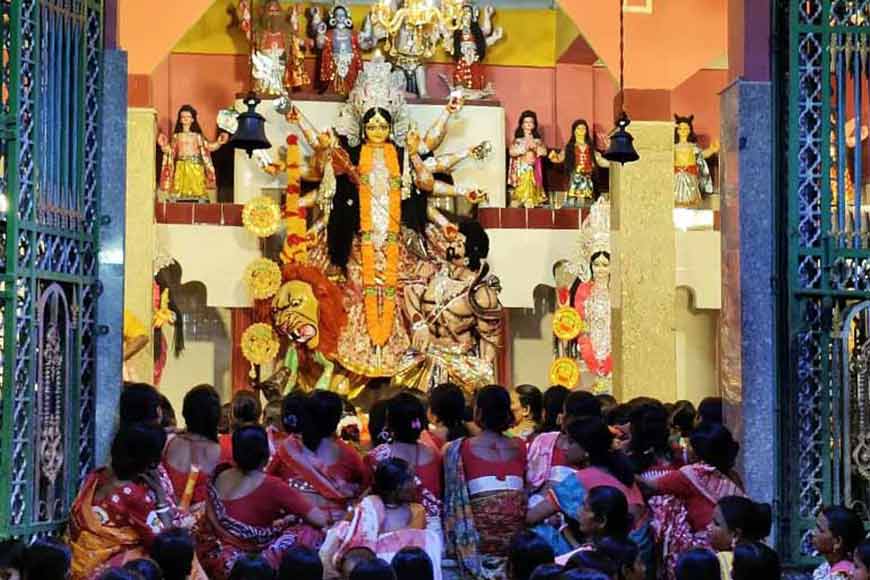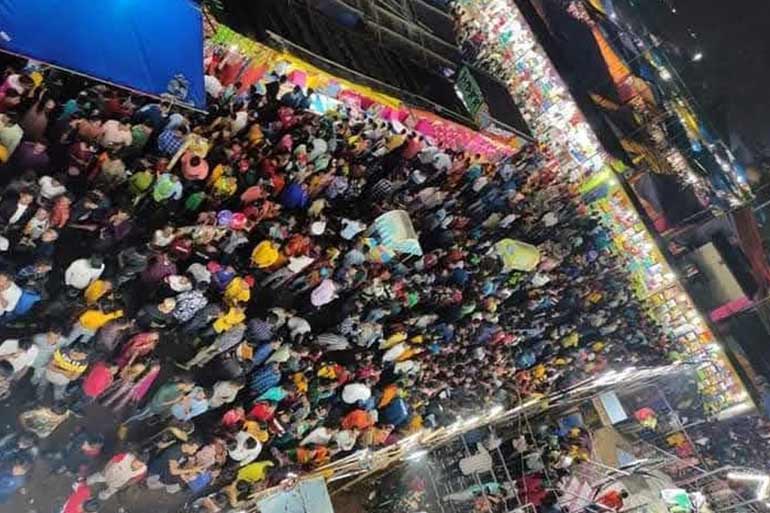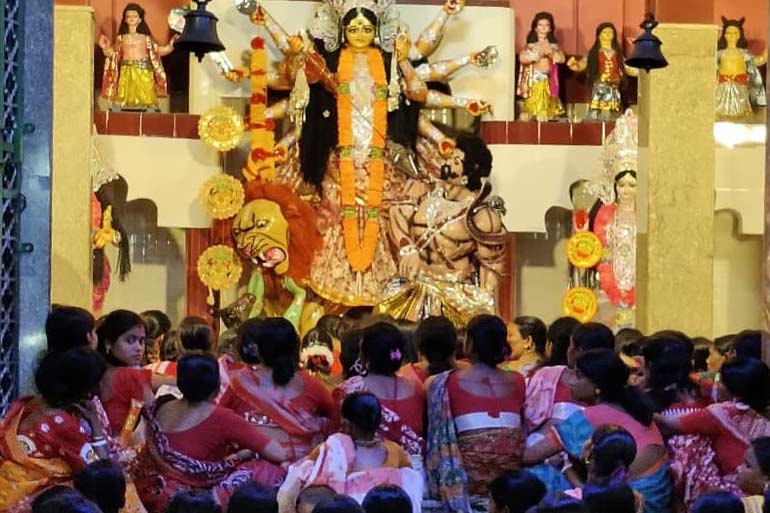Zahra Pal Durga Puja: Uttar Dinajpur’s Legendary ‘Son-in-Law Fair’ - GetBengal Story

“If you offer sweets at Zahra Pal’s Durga Puja, your son-in-law will come home” – such is the local belief in Nandakishoreganj, under the Majhiyali Gram Panchayat in Uttar Dinajpur district. Exactly eight days after Devi Paksha, a one-day Durga Puja (Zahra Mela) is held in this area near Chopra, Uttar Dinajpur. This year, too, the tradition was followed, and the Durga Puja was organized accordingly. On this occasion, the three-day fair adjacent to the Durga temple also commenced.
According to some organizers, the main attraction of the Zahra Mela is the Durga worship held the day after the Puja, alongside the traditional rural fair enjoyed by festival-loving Bengalis. Abdul Bakar, a local resident and fair sweet vendor, says that even today, tribal communities, Rajbanshi people, and Hindu and Muslim residents come out for the fair to enjoy the experience. Visitors also come from afar, including a neighboring state, within Bihar, and even came from the other side of the border in Bangladesh. While they attended the fair in past years, this year the attendance from Bangladesh was low due to the current politics between the two neighboring countries.

The centuries-old fair is eagerly awaited by the local population. Ajay Pal, secretary of the fair committee, told bongodorshon.com, “This Puja and fair attract guests to local homes. In the past, married women from the area used to come to the fair with their sons-in-law, and locally it became famous as the ‘Son-in-law Fair’.” He added that this tradition continues even today. He recalls hearing from his grandmother that offering sweets at Zahra Pal’s Durga Puja ensures the son-in-law’s visit home.
Nevertheless, this Durga Puja celebration occurs after Kojagari Purnima. Per custom, the one-day Puja is broken into three parts, with full worship during the day for each aspect of the Puja: Shaptami Puja in the morning, Ashtami Puja at noon, Sandhi Puja during the evening, and Navami Puja track at night. The deities are also unique in their own way. Along with Goddess Durga, the pantheon has Lakshmi, Saraswati, Kartik, Ganesha, Kali, Tara, Bhuvaneshwari, Ganga, Gaya, Puran, all eighteen forms of God, Nandi, and Vishalakshi. The local population believes that Zahra is a diabetic goddess, and the flowers, which are the offerings we use during the one-day Durga Puja, look beautiful.
Saikat Basak, a primary school teacher and member of the Puja committee, told bongodorshon.com, “This year, the Puja and the traditional fair mark their 137th year. It is said that long ago, the local zamindar Zahra Pal, unable to bring his married daughter home for various reasons, fell ill from the distress. One night, Goddess Durga appeared to him in a dream and instructed him to hold the Puja the next morning. She assured that his daughter would return home with her husband. This is how the tradition of this Puja began. It is also said that for the first three years, the Puja was not performed with idols but on paintings. The fair and Puja are named after Zahra Pal.”
Every year, the Panchayat committee auctions the fair, locally called a ‘Dak.’ The highest bidder in this auction is considered the head of the three-day fair’s business and organizational decisions. This year, the maximum bid was set at 50,000 INR. The main attractions of this rural fair include exquisite clay jewelry, household items, and Shapla (water lily) puffed rice. The fair also sells GI-tagged Tulai Panji rice from Uttar Dinajpur. Evening stalls offer food sold by food stalls selling jalebi, papad, fried snacks, and decor items. The hot fried foods and ghugni stalls liven the evening experience.

Thousands of people attend the fair and Puja. The local police and fair committee are responsible for water, lighting, sanitation, and security for visitors. This year, three tubewells were installed near the permanent Durga Mandap. However, many locals now live outside the region or in other states due to work commitments. With modern lifestyles, taking leave to attend rural fairs is often difficult. How long these quaint rural traditions will survive among the urbanized younger generation remains to be seen.
Note:
Translated by Krishnendu Mitra
To read the original Bengali article, click here.











